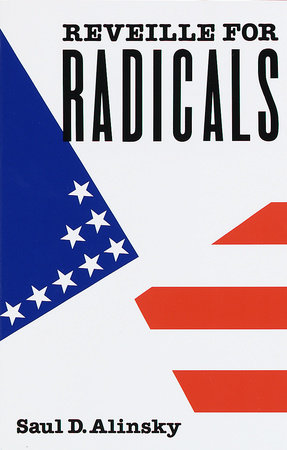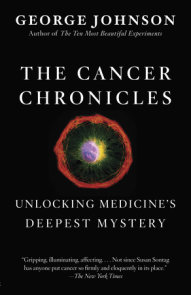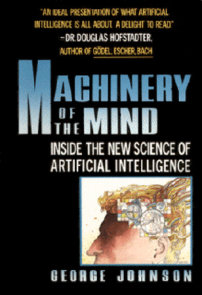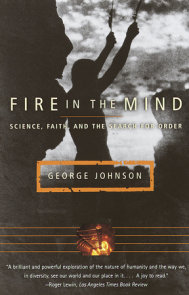Author Q&A
A conversation with George Johnson, author of STRANGE BEAUTY: Murray Gell-Mann and the Revolution in Twentieth Century Physics
Q. Why do you call the book Strange Beauty?
A. When Gell-Mann was in his early 20s, physicists were baffled by cosmic-ray particles, bombarding the earth from outer space, that seemed to defy the known laws of physics. Gell-Mann solved the problem by proposing that the particles were affected by a previously unknown phenomenon that he decided to call "strangeness." The theory, weird name and all, created a sensation. It was the first example of the "strange beauty" he kept finding in the universe — mesmerizing patterns that lie beneath the surface of reality.
Q. What happened next?
A. From there he went on to discover The Eightfold Way and quarks, always bestowing his creations with whimsical names. There are top quarks, bottom quarks, strange quarks, charmed quarks. They’re held together by things called "gluons." Physics was never again the same.
Q. What is the Eightfold Way? And where do quarks fit in?
A. Before Gell-Mann came onto the scene, there were hundreds of tiny subatomic particles of all shapes and sizes. Gell-Mann saw in a flash of insight that they could all be arranged into patterns. He saw order where there had been confusion. The result was the Eightfold Way. Just as the Periodic Table of the Elements is used to arrange all the different kinds of atoms, the Eightfold Way is used to arrange all the subatomic particles. A little later, Gell-Mann realized that the particles line up this way because they are made of tinier things called quarks. A Nobel prize was around the corner.
Q. One of the classic rivalries in science is between Gell-Mann and Richard Feynman. Why was there so much friction between these two intellectual giants?
A. A favorite pastime of physicists was arguing over who was smarter, Dick or Murray. At any university in the world, each would have been the unquestioned star. But at Caltech they were crowded into the same small department, just two doors from each other (with the same poor secretary in between.) Each was always trying to upstage the other. And they had strikingly different styles. Feynman would speak in an affected Brooklyn drawl and refuse to wear a coat and tie. Murray was as impeccable in his dress as he was in his pronunciation — and not just in English but in dozens of other languages. He’s famous for sitting down at Chinese restaurants and ordering in Chinese, and for correcting foreigners on the pronunciations of their own names.
Q. Gell-Mann is also known for being rather — shall we say? — difficult. Tell us your favorite Gell-Mann story.
A. I first met him at a science conference in Santa Fe seven years ago. He coincidentally sat down across from me at lunch, and when I introduced myself as a New York Times editor he launched into a fullscale assault on science coverage in the Times. I was a little shocked, but I knew from the legends that I was seeing vintage Gell-Mann.
Q. He was also a child prodigy, accepted to Yale at age 14. When did he show the first signs of genius?
A. Supposedly, his very first words, sitting on a stoop on 14th Street in Brooklyn, were "the lights of Babylon." In any case, he skipped three grades in elementary school, where he was known as the "pint-sized Einstein" and "the walking encyclopedia." He was the youngest, the smartest, and usually the smallest boy in the class. No wonder he became so intellectually combative. Even after he got a Nobel prize, he had a hard time realizing he didn’t need to compete anymore.
Q. You describe in the book how hard it was, at first, to convince him to cooperate with the biography. How does he feel now that the book is done?
A. I think he’s as apprehensive as I am. As cooperative as he was in the end, this is still an unauthorized biography. That’s the only way I could keep it honest. He’ll read the book along with everyone else. I’m expecting the phone to ring any day now.




























